A little video of Dr. Adams in action.
[vimeo clip_id=”64689957″]

A little video of Dr. Adams in action.
[vimeo clip_id=”64689957″]
There are things that are not illegal, but are still immoral. I’d say that spearing an adult tarpon just so you can show it off a bit before throwing it away is, in fact, immoral. I guess this is happening in federal waters in the Gulf and it is pretty disgusting.
Fly Life Magazine broke this story.
Hundreds of tarpon are being legally killed and trashed every winter, spring and summer by spearfishermen in Gulf coast states. This issue is important and needs to be addressed. These guys aren’t harvesting tarpon. They just kill them and boast – large females to be dissected and sampled and then thrown in the garbage!
This is not good. We need to figure out a way to keep this from happening.
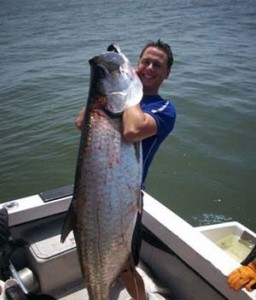
That just sucks.
From the totally awesome Dr. Adams today…
A side note… you should have received this if you are a BTT member and if you aren’t…well, you should be.
Dear Bjorn (that’s me),
The Florida Fish and Wildlife Conservation Commission is considering new regulations for tarpon and bonefish that will improve bonefish and tarpon conservation. We like the new draft rules, and would like your feedback. If you also like the new draft rules, contact the FWC Commissioners to express your support for the proposed new regulations. Proposed regulation change workshops are scheduled for early April, please view the list of dates and times, in addition to the scheduled meetings for public input FWC has also scheduled a webinar and conference call for those unable to attend a meeting.
The draft regulations would make bonefish and tarpon catch and release only. The Commission will discuss these draft regulations at their meeting on April 17-18, in Tallahassee.
At present, bonefish are catch and release only except for an exemption for tournaments that allows for retention of bonefish in a live-well for transport to a weigh-in station. The new draft regulations would remove that exemption, meaning that all bonefish would have to be released at the site of capture (temporarily possessing a fish for weighing, photography, scientific sampling would be OK).
At present, up to two tarpon can be harvested per day if an angler possesses a Tarpon Tag (cost = $50). The new draft regulations would make tarpon entirely catch and release, with the exception of harvesting a fish for an IGFA World Record. Tarpon could be temporarily possessed for photographs, measuring, scientific sampling, and must be released at the site of capture. In the future, the cost of the harvest tag might be increased to help pay for tarpon research and to deter illicit use of the tag.
Tarpon and Bonefish – The proposed draft rule amendments would make tarpon and bonefish catch-and-release-only species in recognition of the fact that their economic and fishing value as fishes caught and released greatly exceeds their value as food fish. In order to accomplish this, the allowance for a tarpon bag limit would be eliminated and replaced with an allowance for possession of a single tarpon in conjunction with a tarpon tag for the purpose of pursuing an International Game Fish Association (IGFA) record. The existing bonefish tournament exemption that allows registered tournament anglers to possess a bonefish for the purposes of transporting it to the tournament scale would also be eliminated.
Tarpon
1. 68B-32.001 Purpose and Intent (NEW) – The proposed draft rule amendment would create a new subsection in order to convey the intent to manage tarpon as a catch-and-release-only fishery with allowable harvest and possession limited to possession in pursuit of an IGFA record.
2. 68B-32.003 Tarpon Tags: Required for Possession; Report; Annual Issuance; Taxidermy; Limitation on Number of Tags Issued Annually; Limitation on Number of Tags Issued to Professional Fishing Guides – The proposed draft rule amendment would limit the use of tarpon tags to tarpon harvested or possessed in pursuit of an IGFA record. The draft rule amendment would also address possible changes to the tarpon tag program, such as changes to the reporting requirements.
3. 68B-32.004 Bag Limit and Gear Restriction – The proposed draft rule amendment would eliminate the two tarpon bag limit and require that all tarpon be released immediately free, alive and unharmed. Allowable possession of a tarpon within or without Florida waters, or elsewhere in the state, would be limited to anglers with the properly affixed tarpon tag who possess a tarpon in pursuit of an IGFA record. Harvest or possession of tarpon in pursuit of an IGFA record would be limited to one tarpon per angler per day. The draft rule amendment would also create a vessel limit of one tarpon per vessel and limit the allowable gears when targeting tarpon to hook and line only. In addition, the proposed draft rule amendment would state the intent to allow for temporary possession of tarpon for purposes of photography or scientific sampling.
4. 68B-32.006 Sale Prohibited, Transport Regulated – The draft rule amendment would reduce the number of tarpon a person is allowed to transport or ship from two tarpon to one.
5. 68B-32 –The draft rule amendment would reorganize and reformat the tarpon rule chapter to conform to the style developed for Division 68B, FAC, during the marine fisheries rule cleanup process.
Bonefish
1. 68B-34.001 Purpose and Intent (NEW) – The draft rule amendment would create a new intent subsection in order to convey that bonefish will be managed as a catch-and-release-only fishery.
2. 68B-34.002 Definitions – The definition of “Organized Tournament” would be removed from the bonefish rules.
3. 68B-34.004 Temporary Possession of Bonefish – The reference to the exception to the possession restrictions for bonefish for tournament purposes would be removed.
4. 68B-34.005 Bonefish Tournaments, Exceptions – This rule would be removed in order to eliminate the tournament exception to the catch-and-release-only bonefish regulations.
5. 68B-34 – The draft rule amendment would reorganize and reformat the bonefish rule chapter to conform to the style developed for Division 68B, F.A.C., during the marine fisheries rule cleanup process.
Tight Lines,
Aaron Adams, Ph.D.
Operations Director
Adam Marton and El Pescador are teaming up to do something kind of cool. Below is what they are saying about it.
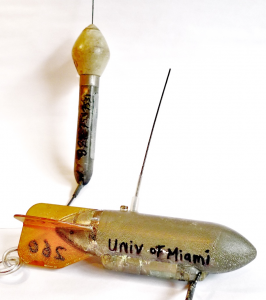
Tarpon Tag
Did you ever want to be a Marine Biologist for a day and play a significant role in the effort to protect and understand global tarpon populations? This is your chance to actually help answer the “$64,000.00 Question” — Are our fish, their fish? Is it possible that the giant tarpon we see late in the summer every year in Belize are the very same fish anglers see in the Florida Keys in May and June… In July of 2013, for the first time in history, join us for a completely unique opportunity to become an elite member of the expedition that will help unlock the answers to the global tarpon migration code.
Join Adam Marton at Belize’s El Pescador Lodge and Villas for this first ever Tarpon Tagging Expedition. Armed with the most technologically advanced PAT & SPOT satellite tags, the goal of the expedition is to land, successfully tag and release two adult tarpon that migrate annually to the world renowned Long Key zone of the Northern Belize Fishery. After tagged tarpon are successfully released, the expedition will be enabling scientists from the University of Miami, Rosenstiel School of Marine and Atmospheric Science to study global movements, habitat and behavior of the fish for up to 6-months. The results of these data sets will ultimately be used to enable fisheries managers, anglers and government officials from around the globe to make even more intelligent decisions about how to properly manage tarpon populations around the world. Our combined efforts to enable intelligent decisions to be made are the cornerstone in ensuring our children’s children will have the opportunity to enjoy the Silver King for generations to come.
This is most probably a once in a life time experience to fish and advance science with an elite group of concerned anglers from all over the world. After very careful consideration of annual migration patterns, optimal moon and tidal phases, the dates for this 7 night expedition are July 10-17, 2013. There are a very limited number of spots available for this expedition.
The 7 night/6 day Tarpon Tagging Expedition package (based on shared standard room and shared guide) is US$3,150.00/per person. To book your spot on the expedition please contact your travel wholesaler, local fly shop or Ali Flota at El Pescador, alissa@elpescador.com – 1-800-242-2017.
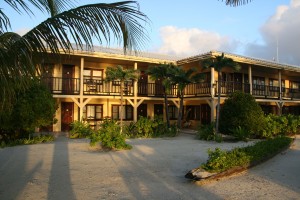
Love this place.
I’ll always be a fan of scientist Michael Larkin. After all, he did send me this:

That is a bonefish tongue
Well, Michael is still out there, still doing good things for bonefish and for fish in general and he’s going to be down in Belize at Belize River Lodge, along with the Bonefish & Tarpon Trust and Frontiers Travel, to host the second annual Belize River Lodge Bonefish and Permit Tagging Challenge. This will be from May 18 to May 25.
Sounds like a good time, no? Here’s how the first one went.
Check it out and go if you can. Good fishing for a good cause.
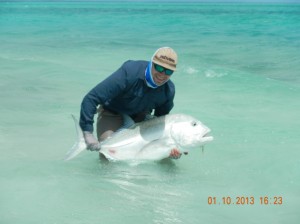
Nice fish. I want one.
I want to catch a GT. Badly. I’m not alone. Who wouldn’t want to catch one? Massive, aggressive (like, OJ aggressive), top water even? Come on!
Guides out in Christmas have found a way to get their well paying foreigner guests the GT they have flown half-way around the world to tie into. The easiest way to get it done is to chum. Milkfish (I almost wrote Milf fish, which is a whole other post, I’d think), are caught and cut up and the juicy bits milk chum lure the big, massive kings (and queens) of the Jack family in for anglers to catch, fight, photograph and release. Doesn’t sound horrible.
However, I’m starting to hear about some major downside to this whole enterprise. Some of the guides are starting to say the Geets are starting to get habituated to the handouts. I read one comment that talked about the fish being the equivalent of Yosemite garbage bears.
Here is what one friend and Christmas Island booking agent had to say…
It was unfortunate that I had to witness the ‘chum’ fishing by other lodges. To cut up and chum with the islands main food fish was sad to see, and many of the guides were disappointed it is happening.
On the bonefish side of thing, the chumming is affecting that also, according to the guides. I heard different takes (mostly in broken English) about the bonefish being extra spooky of any and all noise – thinking it’s “chum time and here comes a bunch of trevally, so lets leave this flat”.
Other guides said on some flats, the bonefish won’t eat a fly well any more, because they are used to picking up extra and stray pieces of chum left over.
“This flat ruined” is what one guide said once.
So, not only does it “train” the trevally, it’s changing the behavior of bonefish – according to the guides.
My group did not chum, and trevally to 65 pounds were landed – legit – on a cast fly to cruising or busting trevally. I personally needed a defibrillator on more than one occasion, as they are viscous hunters and will chase a goatfish, or fly for that matter, right to your feet. It was something else to see !!
Then there were all the the smaller trevally, the queenfish, the triggerfish, and all the wonderful wildlife…. what a special place!!
The debate has carried over to the Dan Blanton message board. Read the debate.
I’d love to hear your thoughts on what is happening there. It is a special place to so many people and it is a place I long to get to myself. Don’t screw up before I get there.
Just read about a group of outdoors sporting organizations asked President Obama to take action on climate change. Those groups included the American Fly Fishing Trade Association, Ducks Unlimited, TU and others.
Thought I’d share some thoughts about why climate change matters for you, the angler interested in pursuing bonefish.
While I can envision a future where water temps in the SF Bay support resident populations of bonefish, that future is likely very, very far away. However, climate change poses an immediate threat to a place we mostly all love… the Bahamas.
All you need is a one meter rise in sea levels and, well… bad things happen (source).
1 m SLR places 36% of the major tourism
properties at risk, along with 38% of
airports, 14% of road networks and 90%
of sea ports.
Yeah… that’s not good. These places won’t be under water next year, but seas are rising faster than originally expected and it could me we have, oh, 100-150 years for a full meter sea rise.
This stuff has been here for thousands of years and it is supposed to be here for longer than just another 150.
So… it matters. It matters to me, and if you love bonefish and the Bahamas, it should matter to you.
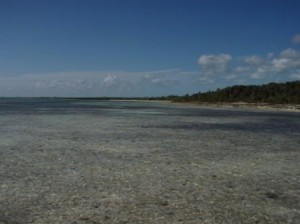
sigh…
Bonefish & Tarpon Trust membership that is.
Because we still have Saturday delivery, for a little while longer, I got this package in the mail from BTT today, or, as you read this, yesterday.
Bonefish. Tarpon. Of course, they had me at bonefish.
I suggest you give them some of your hard earned money so they can try to preserve bonefish, tarpon and permit so you can spend the rest of your hard earned money chasing bonefish, tarpon and permit.
Makes sense, doesn’t it?
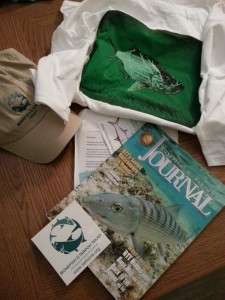
Give, and you get… of course, you get fish, which is way more than anyone could ask for.
A new report just published lays out the status of bonefish and tarpon.
For the first time, all species of tarpons, ladyfishes and bonefishes – marine species found globally in warm-water seas – have been assessed for The IUCN Red List of Threatened Species™. Of the 17 known species, two, Tarpon (Megalops atlanticus) and Roundjaw Bonefish (Albula glossodonta) are classified as Vulnerable. One species, Bonefish (Albula vulpes) is listed as Near Threatened, three species are listed as Least Concern and 11 are classified as Data Deficient.
I’m surprised to see our pal Albula Vulpes listed as Near Threatened. I know there are less of them than there once were and I suppose things like habitat loss and development, as well as pollution and rising acidity and sea levels will take a toll on the Grey Ghost.
Certainly, we, as anglers need to pay attention to what is happening and do what we can.
Science Wednesday is back with one of my favorite topics. Sharks. No secret that shark populations are, well, about as robust as Mr. Burns.
Turns out Oceanic White Tips may be benefiting from the marine protected areas of the Bahamas.
Experts suggest that the island nation’s marine protected area is assisting the species.
Um… I had not understood this… this is awesome.
In July 2011, the Bahamian government banned shark fishing in all 240,000 square miles of the country’s waters.
Good on ya, Bahamas. Good on ya.